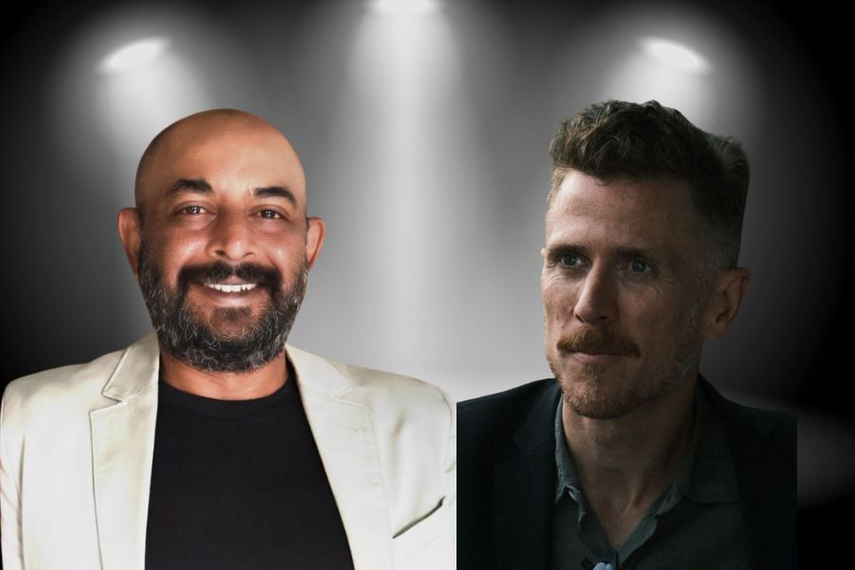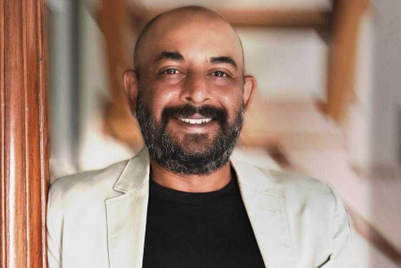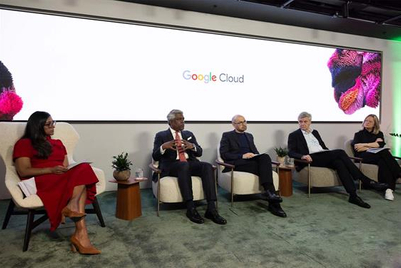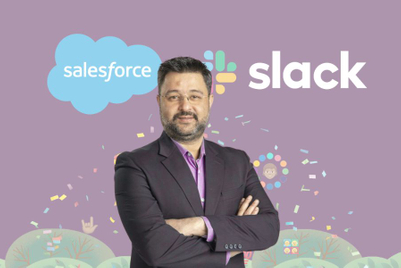
If the Cannes Lions are advertising’s annual mirror moment, then this year’s reflection came with a furrowed brow. Henry Cowling, chief innovation officer at .Monks, sensed “advertising is having a bit of an identity crisis.” Existential? Maybe not just yet. But, as he points out, the hesitation and resentment are real—and sometimes bitter.
One thing that especially irks him is the term “AI slop,” a dismissive shorthand for the glut of mediocre machine-made content. Cowling urges the industry to move past the fear and reframe the moment: “It’s a cliché in our industry, for agencies to call upon our clients to be brave. Now the tables are turning and the world is calling on us to be brave. That should be a positive thing.”
Ketan Desai, MD of .Monks India, echoes the sentiment, “This is bravery… AI’s going to help us become better and serve our clients better.”
As for Monks, it’s betting on Monks.Flow not just as a workflow tool but as a full-fledged product with real commercial potential. The company sees growth ahead through consulting and advisory services—especially in helping brands navigate tech change and implement systems.
Here are edited excerpts of their conversation with Campaign:
As it becomes very tech-oriented, is advertising moving away from creativity?
Cowling: It's a false dichotomy that more technology means less creativity. Everyone's talking about AI leading to a sea of mediocrity—it frustrates me as it lacks ambition and a true appraisal of what the technology is capable of. I don’t think the option is either creativity or technology. Ten years ago, it was data; now it's AI. Most creatives still aren’t engaging with performance insights to enhance their work. The opportunity with AI is to elevate our creative output at scale and transform every customer experience. If any industry can harness AI’s potential, it’s ours—filled with the most creative people globally.
With AI tools becoming more accessible, the role of a prompt engineer could soon rival that of a chief creative officer (CCO)—the traditional creative brain of an agency. If anyone can now turn ideas into execution at scale, does this upend the creativity’s very hierarchy in adland?
Cowling: It is absolutely creating challenging dynamics, and the democratisation of creativity is one of them. It’s not about winners or losers—though I don’t want to be insensitive—but giving more people access to creative tools is fundamentally a good thing.
In advertising, it lets more people harness creativity for commercial value, benefiting their careers and the economy. Yes, change is painful. Some might see it as undercutting the role of a CCO or ECD, but I see it as elevating those who previously couldn’t contribute. Many CCOs view this as a chance to empower younger talent and accelerate their growth.
At Cannes this year, tech leaders again reassured creatives, that they are not coming for jobs in advertising but are here to empower them. But with Meta, Google and Alphabet entering creative territory with tools and dashboards, are they quietly reshaping the industry while claiming to merely enable it?
Desai: The platform is for everyone—but like SAP, it needs smart people to build on top of it to make it work for them. That’s exactly the case in advertising and media too, and this is where the industry needs to be brave.
.Monks sets its AI innovation 6–12 months ahead of market. What internal frameworks or cultural shifts enable this, while others still grapple with basic AI literacy?
Cowling: At .Monks, we’ve committed to staying 6–18 months ahead of the market—because anything less simply won’t cut it in the AI age. We were the first in our category to say this is real and massive and to openly confront how AI reshapes the economics of advertising, creativity, and client engagement. While others downplayed its capabilities, we maintained, if it's not there today, it will be there very soon, which is exactly what’s playing out now.
What you're seeing today in AI is the worst it will ever be. The industry can’t afford denial—'the genie is out of the bottle’, and facing that head-on has been our edge, largely because of our management. Our leadership didn’t get everything right, but they’ve leaned into disruption from day one, which has allowed us to reimagine our role—not just as an agency, but as a change agent.
When I joined .Monks nearly eight years ago, I was joining an agency. Today, we’ve become a partner that combines creative excellence with sophisticated tech to unlock commercial possibilities our clients didn’t have before. That’s the alchemy—fusing creativity and technology to deliver real business value. There is so much growth potential and runway in that space, and while I recognise the risks, I’m far more energised by the opportunities AI is opening up for us and our clients.
While alchemy has been originally the concept of turning ordinary materials into gold, it was flagged for being a misrepresentation. Do you think AI will also be a flash in the pan?
Cowling: I dislike how the industry often downplays major disruptions like AI with soothing platitudes. Lines like “AI won’t take your job, but someone using it will,” or “It’s just another tool,” ring false. You can’t tell an entry-level copywriter that AI is merely a tool when it can already do much of their job—and that of an art director too. It’s challenging the very foundation of our industry, which rests on the classic copywriter–art director pairing. So yes, people are right to feel anxious.
We feel it too—as service partners, we’re watching AI disrupt roles long considered the domain of human intelligence. It’s digitising and scaling what was once the exclusive terrain of the knowledge economy. That’s a foundational shift. Of course it’s unsettling. Still, I hope what .Monks is doing inspires some. If we can use AI to create value and elevate creativity, it could be the best tailwind we’ve ever had.
Desai: I agree with Henry. What makes .Monks different is that we’re not playing catch-up like big agencies. We're not burdened with legacy systems trying to integrate AI—we started differently. When people worry about job losses, I say: think about how clients pay us. Retainers aren’t rising while costs are. No agency I’ve worked with believes the money received matches the work done. We need to fundamentally become something else—and better. AI can help. What took an art director or copywriter eight hours, AI can now do in five minutes—so long as it meets the highest standards, why not use it?
With Monks.Flow now a proprietary AI ecosystem, how will this shift impact traditional agency-client dynamics, especially in industries still tied to time-and-materials models?
Desai: Let me keep this India-specific. Our job right now is to go to clients and explain AI’s potential—we're in a teaching phase for the next 18 months. In the world’s most populous, digitised market, personalised information delivery is essential. Whether you're targeting top, mid or bottom funnel, Monks.Flow supports it all. These funnels may be old, but today they demand a new approach. Monks.Flow combines tech and insight to help brands reach the right audience and gather relevant feedback. You simply can’t produce the volume of content needed manually—Monks.Flow orchestrates that output efficiently and effectively.
Cowling: With Monks.Flow, we saw an opportunity to productise AI specifically for marketing organisations. AI is magical as a foundational technology, but it lacks the interface and customisation that CMOs need. That’s the vacuum we stepped into—Monks.Flow was built to address that.
At Cannes, we launched its upgrade, Agent Studio, which allows us to deploy trained AI agents into a client’s organisation. These agents can perform tasks using client data, interact with customers, and even create assets. They’re grounded in our expertise and the client’s data—and they keep learning.
We're helping clients navigate this transformation through technology solutions like Monks.Flow. That said, we’re tech-agnostic—we help clients onboard whatever works best for their unique needs. But Monks.Flow has also enabled us to rethink our commercial model. The traditional time-and-materials billing structure is being disrupted. We're now creating revenue from productised solutions and consulting. This is a new business line for us, and one we've heavily invested in. Advisory and tech services are two of .Monks' strongest suits today.
We’re also playing a systems integration role for clients, often under retained contracts. But even here, we're shifting to output and outcome-based billing. Some clients already pay per output, not hours. The human hour has always been an inadequate unit of productivity. Today, with AI, it's increasingly irrelevant—what you can produce in an hour varies dramatically based on your systems and how well you leverage AI. That’s the shift we’re enabling with Monks.Flow.
How do you plan to scale the consultancy business in India and which are the sectors that can be quick winning, but strategic, revenue stream?
Desai: From an India perspective, we need strong plans to open doors for clients. A CMO conversation might bring in a CTO or CFO with massive, differing expectations. This isn’t just an advertising-agency conversation anymore. We’ll keep investing in showing what this technology can do—and where it can take us next.
You spoke about systems integration and plugging .Monks’ tech tools into client frameworks. Does this mean you're competing with players like TCS or Wipro now?
Cowling: You're not wrong. Maybe where we differentiate is our deep expertise in marketing and long-standing relationships with CMOs. No CMO today reaches their customers without technology—it’s always intermediated in some way. Over the last 20 years, CMOs have become tech-fluent, though some companies still use legacy systems. That’s where .Monks adds value.
We understand the tech—that's table stakes—but more importantly, we understand how marketers use it, what their goals are, how they're evaluated, and their place within the C-suite. That nuanced understanding enables us to drive real marketing-led business transformation.
The AI moment is disrupting many sectors, but it’s hitting marketing first. Look at what foundational models can do—it’s what agencies do.
The opportunity for CMOs is to adopt these technologies, reshape processes, and then scale those learnings across the organisation. Marketing can lead enterprise-wide transformation, and that positions us well—because CMOs trust us, and they’re increasingly at the helm of change in this new economy.
Is the CMO the right person to have this conversation with, or should it be the CIO, CTO or even the CEO?
Cowling: Certainly the CEO. The CMO and CTO roles are colliding—our best CMOs are so fluent in tech today, you’d have called them CTOs five or ten years ago. These lanes are blurring. While our conversations start with the CMO, they often extend to the CTO, CIO, and ultimately the CEO.
Desai: You're actually seeing that in India. In aviation, the CTO and CMO work closely because the consumer journey links directly to marketing. It’s similar in insurance—multiple stakeholders like the Chief Acquisition Officer, CMO, chief reinsurer, legal, and even banking teams hold different data points. Everyone sits on data for the same consumer, but smart decisions are tough without alignment. Who brings it all together and says, ‘Here’s the issue, here’s what we need to do?’ That’s where we come in. Monks.Flow connects those disparate datasets and functions to enable cohesive, strategic decision-making across the organisation.
Given S4 Capital’s Q1 2025 report showing an 11.4% drop in like-for-like net revenue and a 36.9% decline in technology services, what growth levers do you see specifically in India, where the marketing spend is rising but remains cautiously measured, especially around AI investment?
Desai: Currently, around 49% of marketing spend is digital. We're in the best position when traditional media shrinks—something must contract for something to grow. The fear is whether we’re reaching the right audience and getting unbiased feedback.
These are burning questions. Monks.Flow helps answer them. Budgets aren’t shrinking because the economy is; it’s because people don’t know where their money’s going. Regardless of budget or ambition, we help clients get to where they need to go.
Cowling: Gartner recently reported they’re at a five-year low as a share of company revenues. What that doesn’t show is media costs have risen significantly, so CMOs are getting lesser bang for fewer bucks. That pressure is pushing everyone toward AI. All roads lead to AI, especially as performance improves and costs fall—ChatGPT 3.5, for instance, is now 280 times cheaper to run than at launch. At Cannes, every marketer conversation was essentially about accelerating AI adoption. And no, AI isn’t eating our lunch—it is our lunch, because we’re 12–18 months ahead.
If .Monks integrates its AI tools into a client’s systems, it creates long-term stickiness—making it harder for the client to decouple. Could AI, then, be a pathway to building lifelong strategic partnerships with clients?
Cowling: Clients need to choose their AI partners and technologies carefully, because the decisions they’re making today… will define their roadmap for the next five to 10 years. I’ve been telling clients that their AI strategy is too important to outsource—especially the foundational technology, the data it runs on, and the learnings it generates. That package will soon become the most valuable asset in their business. You don’t want that sitting with someone else.
This is why we believe clients need trusted, unbiased partners who offer measured advice on trade-offs at every stage. At .Monks, we see ourselves as that trusted partner. This transformation won’t end in a year or two—we’re only at the start. The capabilities of core technologies have skyrocketed in just three or four years, and they’ll keep evolving. With that, use cases will grow, consumer behaviour will shift, and our job is to guide clients through this long-term journey.



.jpg&h=334&w=500&q=100&v=20250320&c=1)
.jpg&h=334&w=500&q=100&v=20250320&c=1)
.jpg&h=334&w=500&q=100&v=20250320&c=1)

.jpg&h=334&w=500&q=100&v=20250320&c=1)







.png&h=268&w=401&q=100&v=20250320&c=1)



.png&h=268&w=401&q=100&v=20250320&c=1)
